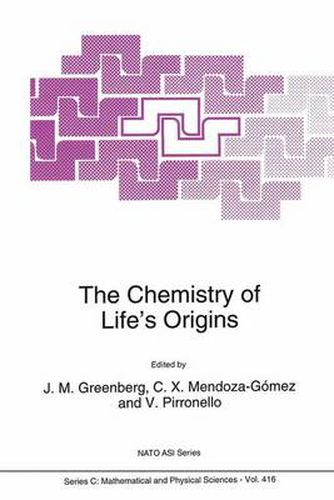Readings Newsletter
Become a Readings Member to make your shopping experience even easier.
Sign in or sign up for free!
You’re not far away from qualifying for FREE standard shipping within Australia
You’ve qualified for FREE standard shipping within Australia
The cart is loading…






This title is printed to order. This book may have been self-published. If so, we cannot guarantee the quality of the content. In the main most books will have gone through the editing process however some may not. We therefore suggest that you be aware of this before ordering this book. If in doubt check either the author or publisher’s details as we are unable to accept any returns unless they are faulty. Please contact us if you have any questions.
The now recognized extensive existence of life on earth very shortly after the destructive bombardment of the earth’s surface by early solar system debris has stimulated inquiry into possible exogenous sources of prebiotic molecules from space as well as intensified studies of the early earth’s atmosphere. The chapters in this book cover the possible sources of prebiotic molecules, and avenues by which life could have evolved, starting from the birth and evolution of the solar system. The relevance of the experiments by Stanley Miller on the formation of life’s building blocks on an early earth is re-examined. The role of chemistry in space is covered by chapters on interstellar dust, and meteorites to which experimental, as well as theoretical investigations, have been directed. In various chapters the existence of amino acids, as well as other prebiotic molecules in meteorites is clearly established and inferred for interstellar dust and comets. Theories of molecular synthesis in the solar nebula are considered. Extensive coverage is given to the physical conditions and to prebiotic systems on the early earth. Possible pathways to life on an early Mars and the possible messages to be obtained by space exploration are discussed. Questions of effects of clays and of chirality on early chemical evolution are discussed. Recent ideas on the RNA world as the precursor to life are reviewed. The open-endedness of the study of life’s origins and the need to investigate whether the prebiotic building blocks formed in outer space or on the earth is emphasized.
$9.00 standard shipping within Australia
FREE standard shipping within Australia for orders over $100.00
Express & International shipping calculated at checkout
This title is printed to order. This book may have been self-published. If so, we cannot guarantee the quality of the content. In the main most books will have gone through the editing process however some may not. We therefore suggest that you be aware of this before ordering this book. If in doubt check either the author or publisher’s details as we are unable to accept any returns unless they are faulty. Please contact us if you have any questions.
The now recognized extensive existence of life on earth very shortly after the destructive bombardment of the earth’s surface by early solar system debris has stimulated inquiry into possible exogenous sources of prebiotic molecules from space as well as intensified studies of the early earth’s atmosphere. The chapters in this book cover the possible sources of prebiotic molecules, and avenues by which life could have evolved, starting from the birth and evolution of the solar system. The relevance of the experiments by Stanley Miller on the formation of life’s building blocks on an early earth is re-examined. The role of chemistry in space is covered by chapters on interstellar dust, and meteorites to which experimental, as well as theoretical investigations, have been directed. In various chapters the existence of amino acids, as well as other prebiotic molecules in meteorites is clearly established and inferred for interstellar dust and comets. Theories of molecular synthesis in the solar nebula are considered. Extensive coverage is given to the physical conditions and to prebiotic systems on the early earth. Possible pathways to life on an early Mars and the possible messages to be obtained by space exploration are discussed. Questions of effects of clays and of chirality on early chemical evolution are discussed. Recent ideas on the RNA world as the precursor to life are reviewed. The open-endedness of the study of life’s origins and the need to investigate whether the prebiotic building blocks formed in outer space or on the earth is emphasized.